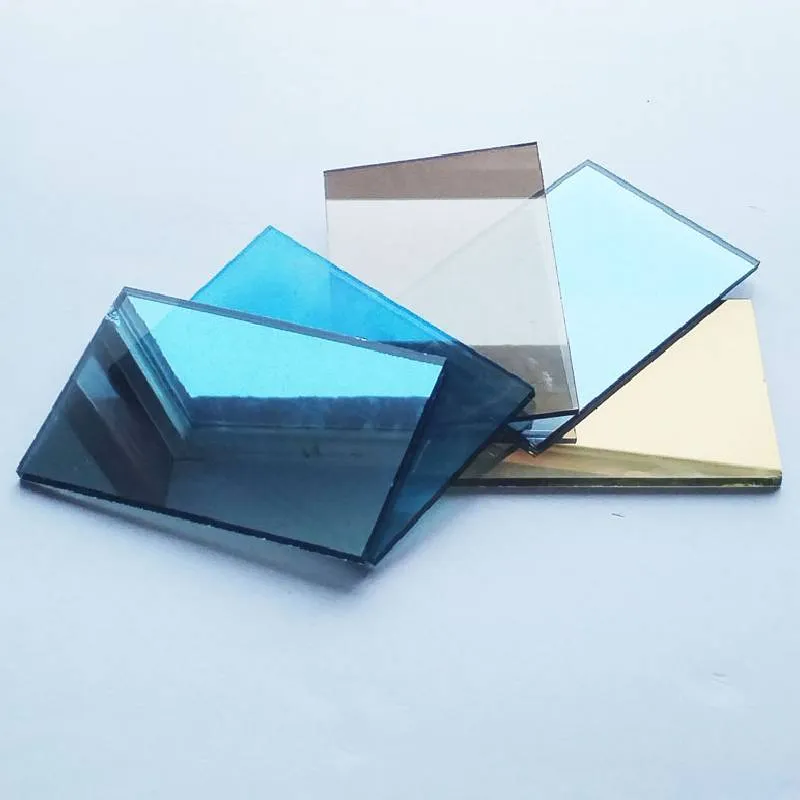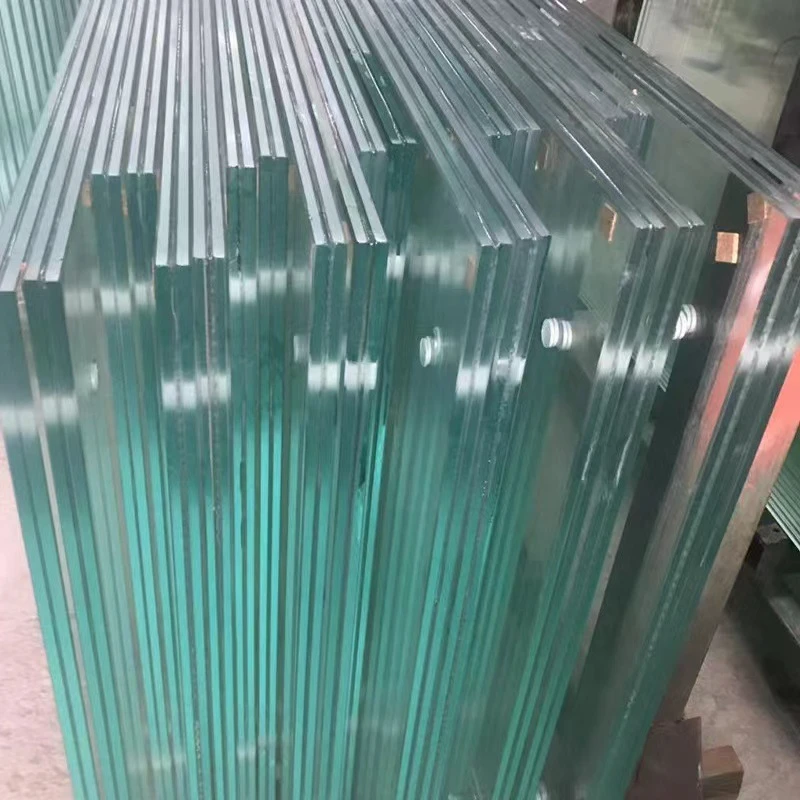In the ever-evolving world of glass technology, tempered glass and laminated glass stand out as two of the most critical innovations. As someone deeply embedded in the nuances of architectural materials and safety solutions, I've observed the transformative impact these two types of glass have had in various domains, from construction to automotive industries.

Tempered glass, known for its strength and safety features, undergoes a meticulous heat treatment process, which involves heating the glass to a high temperature and then rapidly cooling it. This process increases its strength compared to regular glass, making it four to five times stronger. Tempered glass is designed to shatter into small, harmless pieces rather than sharp shards when broken, which significantly reduces the risk of injury. This feature alone makes it an ideal choice for automotive windows, shower doors, and even glass doors in office environments where safety is paramount.
From firsthand experience in the construction industry, tempered glass also plays a pivotal role in building façades and interior partitions. Its clarity and ability to withstand significant wind pressure and thermal stress make it a preferred choice for architects aiming to combine aesthetic appeal with functional safety. The highly reflective nature adds a contemporary touch to buildings, promoting an inviting yet secure environment for inhabitants.

Laminated glass, on the other hand, presents a different set of qualities, further enhancing its value proposition for safety and durability. Created by bonding two or more layers of glass with a plastic interlayer, laminated glass holds the glass fragments in place upon impact, vastly improving security. It's been an invaluable component in areas prone to hurricanes and other environmental challenges, as it prevents debris from penetrating the glass and shields structures from potential breaches.
In the automotive industry,
laminated glass is primarily used in windshields. It offers superior noise reduction due to its soundproofing qualities – a factor that enhances the driving experience by creating a quieter cabin environment. The safety features of laminated glass cannot be overstated, as it resists penetration upon impact, forming a strong barrier that keeps passengers protected during accidents.
Expertise in material sciences reveals that the interlayer in laminated glass also blocks up to 99% of ultraviolet rays, helping in thermal insulation and protecting interior furnishings from fading. This feature is particularly valued in residential and commercial buildings where energy efficiency and longevity of interior decor are concerns.
tempered glass and laminated glass
Healthcare facilities often prefer laminated glass due to its ability to provide an extra layer of security and reduce noise pollution, thereby contributing to a peaceful healing environment. As someone deeply engaged with healthcare infrastructure projects, I can attest to the indispensable nature of laminated glass in ensuring patient comfort and safety.
In terms of expertise, the structural applications of tempered and laminated glass extend to modern architectural masterpieces such as stairways, balustrades, and floors. The high safety and strength features not only adhere to stringent building codes but also enhance aesthetic appeal, offering architects and designers the freedom to explore creative possibilities. This aligns with the current trend towards open, airy spaces that allow for natural light to flood interiors, promoting eco-friendly and energy-efficient buildings.
The authoritativeness of tempered and laminated glass lies not just in their material properties but also in compliance with strict international safety standards. Both types of glass are rigorously tested to meet criteria set by industry bodies such as ASTM International and other regional equivalents, instilling confidence in their application across various sectors.
Trustworthiness in the field of construction and automotive industries is built on continuous innovation and adherence to safety benchmarks. Both tempered and laminated glass represent reliability and predictability, which are crucial factors for designers, engineers, and end-users alike. Manufacturers often provide extensive warranties, further attesting to the enduring quality and performance customers can expect.
In conclusion, the strategic application of tempered and laminated glass provides unparalleled benefits in terms of safety, aesthetics, and functionality. Their respective qualities make them indispensable in their roles, whether in safeguarding vehicle occupants or enhancing the resilience and beauty of modern architecture. As a seasoned observer of technological advancements, the future of these glass types is promising, with ongoing innovations further solidifying their place as essential materials in the realms of construction and design.
 Afrikaans
Afrikaans  Albanian
Albanian  Amharic
Amharic  Arabic
Arabic  Armenian
Armenian  Azerbaijani
Azerbaijani  Basque
Basque  Belarusian
Belarusian  Bengali
Bengali  Bosnian
Bosnian  Bulgarian
Bulgarian  Catalan
Catalan  Cebuano
Cebuano  Corsican
Corsican  Croatian
Croatian  Czech
Czech  Danish
Danish  Dutch
Dutch  English
English  Esperanto
Esperanto  Estonian
Estonian  Finnish
Finnish  French
French  Frisian
Frisian  Galician
Galician  Georgian
Georgian  German
German  Greek
Greek  Gujarati
Gujarati  Haitian Creole
Haitian Creole  hausa
hausa  hawaiian
hawaiian  Hebrew
Hebrew  Hindi
Hindi  Miao
Miao  Hungarian
Hungarian  Icelandic
Icelandic  igbo
igbo  Indonesian
Indonesian  irish
irish  Italian
Italian  Japanese
Japanese  Javanese
Javanese  Kannada
Kannada  kazakh
kazakh  Khmer
Khmer  Rwandese
Rwandese  Korean
Korean  Kurdish
Kurdish  Kyrgyz
Kyrgyz  Lao
Lao  Latin
Latin  Latvian
Latvian  Lithuanian
Lithuanian  Luxembourgish
Luxembourgish  Macedonian
Macedonian  Malgashi
Malgashi  Malay
Malay  Malayalam
Malayalam  Maltese
Maltese  Maori
Maori  Marathi
Marathi  Mongolian
Mongolian  Myanmar
Myanmar  Nepali
Nepali  Norwegian
Norwegian  Norwegian
Norwegian  Occitan
Occitan  Pashto
Pashto  Persian
Persian  Polish
Polish  Portuguese
Portuguese  Punjabi
Punjabi  Romanian
Romanian  Russian
Russian  Samoan
Samoan  Scottish Gaelic
Scottish Gaelic  Serbian
Serbian  Sesotho
Sesotho  Shona
Shona  Sindhi
Sindhi  Sinhala
Sinhala  Slovak
Slovak  Slovenian
Slovenian  Somali
Somali  Spanish
Spanish  Sundanese
Sundanese  Swahili
Swahili  Swedish
Swedish  Tagalog
Tagalog  Tajik
Tajik  Tamil
Tamil  Tatar
Tatar  Telugu
Telugu  Thai
Thai  Turkish
Turkish  Turkmen
Turkmen  Ukrainian
Ukrainian  Urdu
Urdu  Uighur
Uighur  Uzbek
Uzbek  Vietnamese
Vietnamese  Welsh
Welsh  Bantu
Bantu  Yiddish
Yiddish  Yoruba
Yoruba  Zulu
Zulu 


